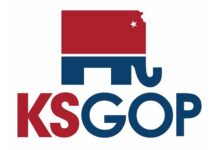A new audit questions how some school districts are spending money targeted at helping students who are at risk of failing academically.
Legislative auditors found that at-risk money for students went toward teacher salaries and programs that did not appear to specifically address students as required by state law.
The audit also found that at-risk programs in many of the 20 districts audited lacked strong research findings that documented the programs are effective.
It also revealed that districts spent almost $191,000 in at-risk funding on programs not directly related to at-risk students.
“We found districts spent most of their at-risk funds on teachers without assurance the funding targets at-risk students or employs evidence-based practices and programs,” the auditor concluded.
“That is in part,” auditors said, “because (the education department) has provided districts with unclear, and at times, inaccurate guidance.”
Officials from the Kansas Department of Education disagreed with the finding that they weren’t communicating clearly with local school administrators.
They said they work with all 286 school districts through various conferences during the year.
“We can always get better,” Deputy Education Commissioner Dale Dennis told lawmakers at a hearing on the audit Monday.
In their review of 20 school districts that received $125 million in state at-risk funding, auditors found that $191,000 went for items not directly related to vulnerable students. State at-risk spending totaled $413 million during the 2018-19 academic year.
The audit showed that the $191,000 was spent on an after-prom party donation ($500), playground equipment ($13,875), teen court ($20,686), athletic trainer’s salary ($25,435), a copy machine contract ($158) and Google Chromebooks ($87,000), among other things.
Some lawmakers had a problem with the questioned spending, especially after the state Supreme Court ordered the state to spend money addressing underperforming students.
“This money was designated for those kids that are underperforming,” said Republican state Rep. John Barker, who chairs the legislative audit committee.
“Maybe I am just looking at it wrong, but I’m thinking this money…should just be spent on those at-risk kids.”
Barker wanted an explanation of how the $191,000 highlighted in the audit related to at-risk students.
Dennis told lawmakers that some of those expenses were probably not allowable.
He said the expenses would be checked and audited. He said the school districts would have to address the spending questions.
Dennis said some of the expenses, such as the Chromebooks, are important for at-risk students. Others, not so much, he said.
“Some of those things will not be approved,” Dennis said. “They’ll have to go back and correct it.”
Republican state Sen. Julia Lynn said the audit called into question how schools are spending taxpayer dollars.
“I believe this is a trust issue,” she said. “I don’t know now that additional funding we have given over the years is being appropriated in the way the Legislature has intended.”
Lynn added, “How can we be sure that the money we appropriate for at-risk kids is going to go to at-risk kids?”
Deputy Education Commissioner Brad Neuenswander said the state demands accountability for how the money is spent.
“If someone submits they’re spending it on a nurse, they have to tell us what is that nurse doing for these at-risk youth,” he said.
Neuenswander said that none of the processes the Board of Education has put in place during the last decade to track the money was reflected in the audit.
The state, he said, coaches all 286 school districts about how they use their at-risk money, determining whether it is evidence-based and whether it’s making a difference.
“None of that was shared in this” audit, he said.
Auditors examined 29 programs and practices school districts said they used on the What Works Clearinghouse, which is a central source of scientific evidence on what works to improve student outcomes.
The audit showed three of the programs had “clear positive effects,” 11 had potentially positive effects and 15 showed either no effect or mixed results.
Auditors said they only looked at programs the school districts said they used on the What Works Clearinghouse, not necessarily programs approved by the state Board of Education.
State law doesn’t allow districts to spend money on just any evidence-based practice, only evidence-based programs or practices approved by the Board of Education.
However, the audit concluded that a new requirement that at-risk funding be spent on evidence-based practices is “poorly managed at the state level and not adequately implemented at the district level.”
The auditors said the Education Department staff could not produce research showing if the approved items were evidence-based.
“Staff told us they rely on school districts and professional organizations to provide research because they do not have enough staff to compile and review the research,” the audit said.
Neuenswander said the auditors believe money can’t be spent for a program until it’s approved on a list. He said the board approves programs on a district-by-district basis.
“Approving doesn’t mean it’s on a list on a website,” he said. “Approving means they submit it to us, they show their evidence, they show if they’re having any growth.
“That is our approval process, which we believe goes beyond the scope of the legislation, (and) it’s what we’ve done for over a decade.”













